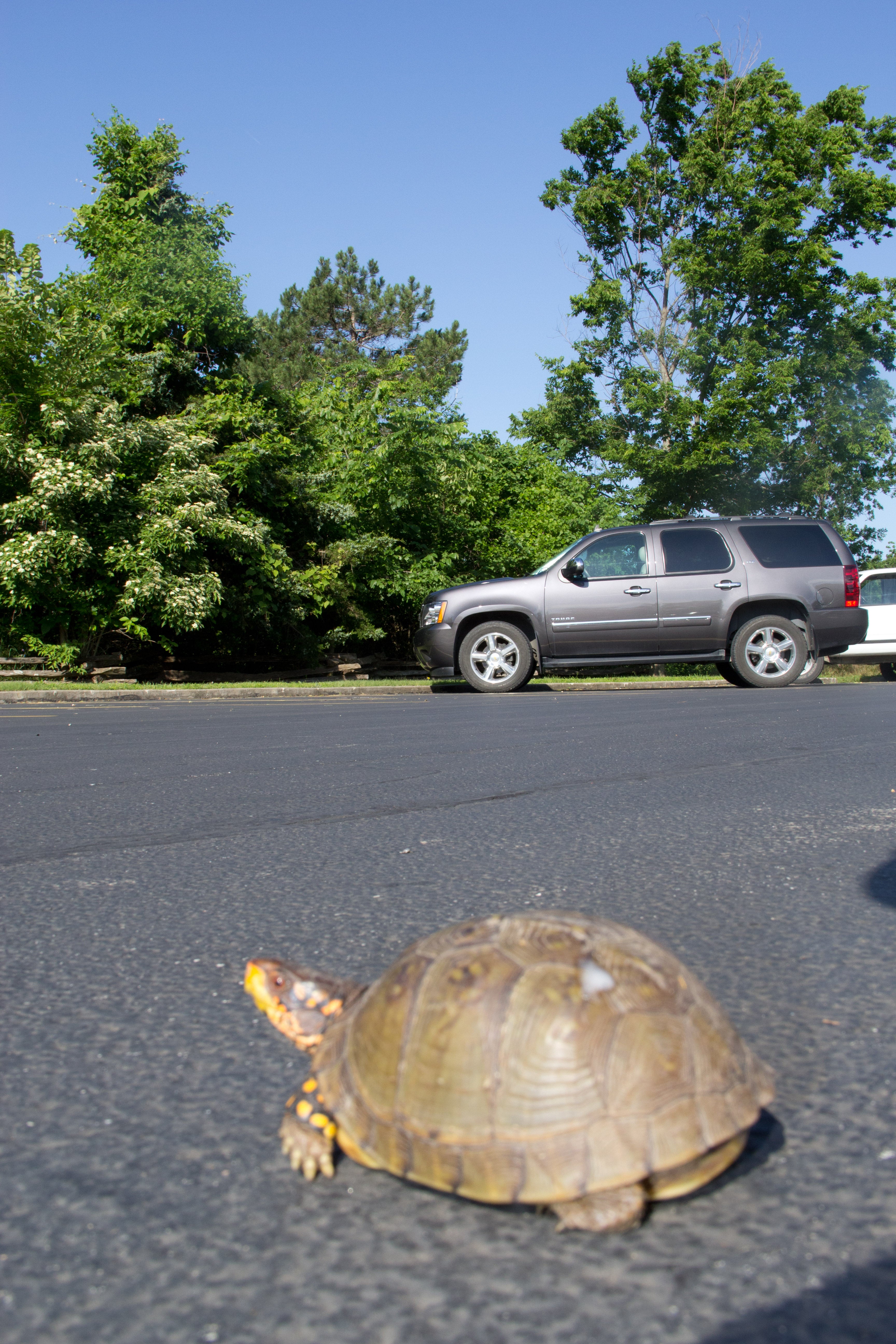
Xplor reconnects kids to nature and helps them find adventure in their own backyard. Free to residents of Missouri.


































Stay in Touch with MDC news, newsletters, events, and manage your subscription

Xplor reconnects kids to nature and helps them find adventure in their own backyard. Free to residents of Missouri.

A monthly publication about conservation in Missouri. Started in 1938, the printed magazine is free to residents of Missouri.


JEFFERSON CITY–Have you ever seen a turtle trying to cross a busy highway and wondered how many die under the wheels of automobiles each year? Jeff Briggler has, and as Missouri’s state herpetologist, the answer worries him.
Briggler and other workers at the Missouri Department of Conservation have made informal observations over the years, counting the number of dead turtles – especially box turtles – on stretches of highway.
“We discovered that mortality rates are very high on high-traffic roads,” says Briggler, “whereas mortalities are much lower on less-traveled roads.”
In just one day, Briggler counted 116 three-toed box turtles crossing Highway 63 between Jefferson City and Cabool. Of those, 104 had been hit by vehicles.
Turtles are struck by cars throughout the warm months, but they are at special risk at this time of year, when they are moving around looking for mates and establishing home ranges. Young males are most at risk. Comfort is a factor, too. Like other reptiles, turtles are cold-blooded. Walking out onto warm asphalt and basking in the morning sun feels good on cool spring days.
Box turtles live a long time, and females continue laying eggs for most of their lives. They need lots of time to replace themselves, since snakes, raccoons, opossums, and other nest predators eat most of their eggs. A low reproductive rate was not a problem before roads crisscrossed their habitat. Animals that continue laying eggs past 60 years of age have plenty of time to replace themselves. But the unnatural mortality caused by speeding cars is a problem.
“Box turtles did not evolve amid thousands of miles of busy highway,” says Briggler. “We don’t know very much about how highway mortality will affect their long-term survival, but the implications of our casual observations are worrisome. Animals with low reproductive potential usually cannot sustain the sort of continuing mortality that we see on our roads.”
To help, Briggler suggests that motorists slow down when they see a turtle in the road and check to be sure they can safely steer around it.
Briggler also is troubled by the too-common practice of capturing box turtles for pets. He said the animals’ nutritional needs are not easy to meet in captivity, so captive turtles are likely to die due to improper care. In most cases, that means slow starvation.
He suggests keeping a turtle only for a day or two and then releasing it where it was captured. He said this last condition is very important, since turtles are intimately familiar with their home areas. If released in strange surroundings, they have trouble finding food and may wander across roads trying to meet their daily needs.
The three-toed box turtle is the species most often seen crossing roads in Missouri. Primarily a woodland species, it is found everywhere but the extreme northern part of Missouri. The ornate box turtle is found in all but the southeastern corner of the state, but is more adapted to grassland and is most common in western Missouri. Young males make up most of the travelers as they search for territories of their own and for female turtles.
Three-toed box turtles have three toes on each hind foot, unless they have lost a few appendages to predators or frostbite. Ornate box turtles usually have four toes per hind foot. In keeping with their name, ornate box turtles also have more vivid yellow stripes on a black background on the tops of their shells. The bottoms of their shells typically have streaks of black on a yellow background.
For more information about box turtles, visit http://mdc.mo.gov/node/987.